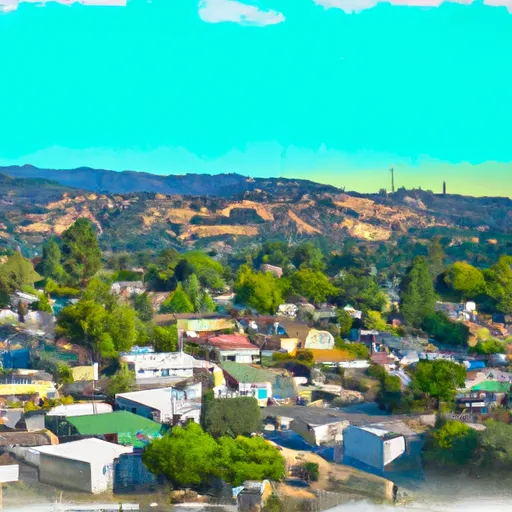-
 Snoflo Premium
Snoflo Premium
Get unlimited access to all our content
With no Ad interruptions! - Start Your Free Trial Login with existing account
Verdi
Eden Index
Climate
8.8
•
Recreation
6.5
•
Community
1.7
•
Safeguard
6.2/10

Verdi, California is a small unincorporated community located in the western part of the state, within close proximity to the Nevada border. The climate in Verdi is classified as Mediterranean, characterized by mild, wet winters and hot, dry summers. The average annual temperature ranges from around 40°F (4°C) in winter to 85°F (29°C) in summer. Precipitation is relatively low, with most of it occurring during the winter months.
In terms of hydrology constituents, Verdi is situated along the Truckee River, which provides a scenic backdrop and recreational opportunities for locals and visitors alike. The river is popular for activities such as fishing, kayaking, and rafting. Additionally, Verdi is surrounded by beautiful mountains and forests, offering opportunities for hiking, camping, and wildlife viewing.
Outdoor enthusiasts can explore the nearby Toiyabe National Forest, which offers a wide range of recreational activities, including hiking trails, mountain biking, and camping. Lake Tahoe is also within driving distance, providing even more opportunities for water-based activities, such as boating and swimming.
Overall, Verdi, California offers a desirable climate, access to the Truckee River, and proximity to natural attractions, making it a great destination for outdoor recreation.
What is the Eden Index?
The Snoflo Eden Index serves as a comprehensive rating system for regions, evaluating their desirability through a holistic assessment of climate health, outdoor recreation opportunities, and natural disaster risk, acknowledging the profound impact of these factors on livability and well-being.
Climate Health Indicator (CHI): 8.8
Verdi receives approximately
475mm of rain per year,
with humidity levels near 63%
and air temperatures averaging around
9°C.
Verdi has a plant hardyness factor of
7, meaning
plants and agriculture in this region tend to thrive during the non-winter months.
By considering the ideal temperature range, reliable water supplies, clean air, and stable seasonal rain or snowpacks, the Climate Health Indicator (CHI) underscores the significance of a healthy climate as the foundation for quality living.
A healthy climate is paramount for ensuring a high quality of life and livability in a region, fostering both physical well-being and environmental harmony. This can be characterized by ideal temperatures, reliable access to water supplies, clean air, and consistent seasonal rain or snowpacks.
Weather Forecast
Streamflow Conditions
Truckee
Area Rivers
Truckee
Snowpack Depths
Truckee
Reservoir Storage Capacity
Truckee
Groundwater Levels
Recreational Opportunity Index (ROI): 6.5
The Recreational Opportunity Index (ROI) recognizes the value of outdoor recreational options, such as parks, hiking trails, camping sites, and fishing spots, while acknowledging that climate plays a pivotal role in ensuring the comfort and consistency of these experiences.
Access to outdoor recreational opportunities, encompassing activities such as parks, hiking, camping, and fishing, is crucial for overall well-being, and the climate plays a pivotal role in enabling and enhancing these experiences, ensuring that individuals can engage in nature-based activities comfortably and consistently.
Camping Areas
| Campground | Campsites | Reservations | Toilets | Showers | Elevation |
|---|---|---|---|---|---|
| Donner Memorial State Park | 54 | 5,951 ft | |||
| Kaspian | 9 | 6,276 ft | |||
| Lake Forest | 20 | 6,260 ft | |||
| Tahoe State Rec Area | 27 | 6,262 ft | |||
| Silver Creek-Truckee | 27 | 6,041 ft | |||
| Mount Rose | 24 | 8,905 ft | |||
| Davis Creek | 63 | 5,171 ft | |||
| Alpine Meadows | None | 5,834 ft | |||
| William Kent | 95 | 6,337 ft | |||
| Goose Meadow | 24 | 5,970 ft |
Nearby Ski Areas
Catastrophe Safeguard Index (CSI):
The Catastrophe Safeguard Index (CSI) recognizes that natural disaster risk, encompassing floods, fires, hurricanes, and tornadoes, can drastically affect safety and the overall appeal of an area.
The level of natural disaster risk in a region significantly affects safety and the overall livability, with climate change amplifying these risks by potentially increasing the frequency and intensity of events like floods, fires, hurricanes, and tornadoes, thereby posing substantial challenges to community resilience and well-being.
Community Resilience Indicator (CRI): 1.7
The Community Resilience Indicator (CRI) recognizes that education, healthcare, and socioeconomics are crucial to the well-being of a region. The CRI acknowledges the profound impact of these elements on residents' overall quality of life. By evaluating educational resources, healthcare accessibility, and economic inclusivity, the index captures the essential aspects that contribute to a thriving community, fostering resident satisfaction, equity, and social cohesion.

